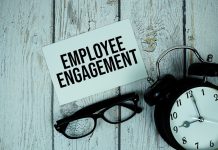
Gen Z enters a very different workplace than their parents and grandparents. We are truly living in the AI age, with every boardroom figuring out how to make the most of the AI gold rush. Yet, many remain hindered by growing digital and data skills gaps that will cost trillions of dollars in lost revenue. In fact, the digital skills gap will likely cost 14 of the G20 countries to lose $11.5 trillion of cumulative gross domestic product growth.
Gen Z can help address the data skills gap
Equipping Gen Z with the right data skills will help to plug this gap (although it won’t fill it completely. The pace of change and continued demand for data and digital skills means skills shortages are here to stay). They’re fast becoming the predominant generation in the workplace, outstripping the number of Baby Boomers currently employed. As they rise through the ranks towards managerial roles, equipping them with the right skills now will pay off for decades.
Current learning is missing the mark
However, upskilling efforts with Gen Z aren’t hitting the mark. Indeed, less than a third of Gen Z feel equipped for a digital-first job right now. Which is surprising given they are the first truly digital native generation. The figures fall even lower when asked about advanced digital skills like coding (20 percent of Gen Z feel equipped for this), data encryption and cybersecurity (18 percent), and AI (a dismal 7 percent).
Yet, there is a silver lining with learning opportunities becoming a lot more engaging and diverse compared to a few years ago. To learn the requisite skills, Gen Z has a host of options, from personalized learning pathways to dedicated academies, coding bootcamps, and even mixed and virtual reality.
A diverse skills mix is needed
This can only be a good thing when considering the range of different data skills needed by workplaces. According to DataCamp, the top nine data skills currently in demand are:
- Python
- SQL and NoSQL
- R
- Data Visualization
- Machine Learning and Natural Language Processing (NLP)
- Amazon Web Services (AWS) and Cloud-Driven Computing
- Extract, Transform, Load (ETL) Skills
- Statistics
- AI
In addition to technical skills, proficiency in data-driven capabilities is crucial. This includes collaborating seamlessly with business teams to develop impact-focused AI products, eliminating biases from data modeling, adeptly selecting the appropriate AI algorithms for specific tasks, accurately monitoring and assessing AI product performance, and effectively communicating AI outputs to empower stakeholders (potentially laypeople) in making data-informed decisions.
Of course, the kinds of skills and proficiencies needed will change depending on your current business priorities, future plans, and existing skills. Every data upskilling strategy will look different, so it’s worth doing foundational work to understand the current types and levels of data skills across your workforce before embarking on a learning program.
How Gen Z learns best
Looking at Gen Z specifically, there are some notable characteristics of this group that need to be factored into any learning plan. Some of these involve mindset and motivation, like Gen Z’s need to tap into a higher purpose, and some are more practical, like the fact that they are the most likely generation to be working multiple jobs.
First of all, Gen Z doesn’t care as much about credentials and traditional academic achievements like going to University. They have a clear distaste for compliance training and prefer to control their learning opportunities. Connecting Gen Z employees with relevant learning content based on their career goals and interests will help them feel more autonomous in their learning. They cannot have their learning mandated and will respond better to suggestions from their manager during informal career conversations or as a reward/recognition for their work.
Designing the journey for Gen Z
For example, when Gen Z employees express an interest in learning data visualization, they can be introduced to a host of learning resources, shadowing a data visualizer, and a linked stretch assignment. Once this is completed successfully, their skills can be built further with a temporary deployment in the data visualization team. They can be invited to a specific academy designed around building data skills and, if they wish, eventually work on projects or move into a full-time data visualization role.
This journey taps into several of Gen Z’s motivations, including the constant need to prove to them, ‘What’s in it for me?’. They are more engaged and likely to upskill in that area if they can clearly link their efforts in learning a skill to real-world career growth.
Because Gen Z is likely to be working several different jobs, they need content that’s easy to consume in short bursts and on the go. Because of the rise of social media, like teaching on TikTok, Gen Z expects learning to be available immediately at a click (or swipe). Simultaneously, however, Gen Z desires more immersive learning experiences. Therefore, offering a mix of easy-to-consume bite-sized learning content and deeper, immersive skill-building experiences will help Gen Z build the breadth and depth of skills needed for their future success. Cohort-based learning will also be an easy win for this group, with 64 percent of Gen Z stating that they like to learn with their peers via problem-solving, discussions, and debates.
The best skill? Lifelong learning
In an ever-changing world, upskilling is not a one-time event. Especially when it comes to data and digital skills that have a decreasing half-life, popular coding languages and tools today will be outdated in just a few years. Therefore, the most critical skill and mindset you can instill in your Gen Z employees is to learn constantly.
Everyone must cultivate a habit of regularly learning, even if it’s just a handful of hours each week because that’s the only way to keep up with new trends and tools. Just look at how quickly ChatGPT changed all organizations’ required skill sets. The next big AI or data killer app is being built right now. For your workforce to be ready for it, they need the ability and openness to build new skills rapidly.




